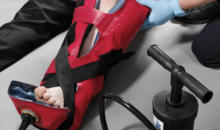
Silver Lake Rescue Squad, Inc. | 209 E. Lake Street | Silver Lake, WI | 53170 | Tel: 262-889-8093


12 Lead ECG
By being able to take a “3D” picture of your heart, we are able to detect a heart attack and determine the area of the heart affected before standard 3 Lead ECG systems. The captured 12 Lead can then be sent to the hospital for interpretation by the ER Physician for the fastest possible care.Services
Silver Lake Rescue Squad practices at the Advanced-EMT Level (AEMT). This level allows our members access to some of the latest advanced life saving interventions. At the IV-Tech level we are able to administer several medications such as Nitro, D50, EPI and Narcan to list a few. Over the years Silver Lake Rescue has made sure to keep up with all of the changes in the EMS field. Our monitors are equipped with the latest functions such as End Title CO2 monitoring and 12 Lead ECG captures that can be sent directly to the Emergency Room while enroute to the hospital.New for 2017
Silver Lake Rescue Squad is proud to annouce that we have now added several new tools to our squad. Silver Lake Rescue is currently the first and only squad in Wisconsin offering pain managment at the AEMT level. We have now been approved for the administration of Nitrous Oxide in the field delivered by state of the art Nitronox Field Units. These devices allow us to treat pain in the field from broken bones and dislocated joints to kidney stones. Nitrous Oxicide is very safe, fast acting and has few side effects. In order to assure the best outcome from cardiac arrest, Silver Lake Rescue has purchased Lucas II automated CPR devices for both of our ambulances. These devices ensure quality, uninterrupted CPR to patients suffering from cardiac arrest. Studies have shown that even a few seconds of interrupted CPR greatly decreases a patients chances for survival. These new devices also help free up EMT’s on scene to allow them to focus on airway and IV managment.C-PAP
Difficulty breathing is one of the side effects of CHF (Congestive Heart Failure). By applying C-PAP in the field we are able to push the fluids building up into the lungs back into the “3rd” space allowing the patient to breath easier and reversing some of the side effects of CHF.ET-CO2 Monitoring
End Title Carbon Dioxide monitoring allows us to monitor in real time, changes in a patients breathing condition. Within seconds we can see if interventions such as C-PAP or Duoneb treatments are working. ET-CO2 also allows us to make sure a patient is receiving good ventilations in a code type situation which is essential for survival.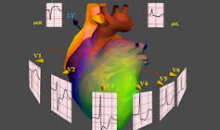
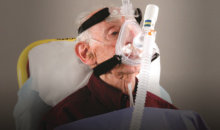


IV / IO Access
Intravenous access allows us to administer medications such as D50 (for low blood sugar) and Narcan for patients who have overdosed on opiate type drugs such as heroin or pain killers such as Percocet. IV solutions also allow us to treat hypo- tension, hypovolemia (blood loss) and dehydration. We also have IV Warmers that allow us to treat patients suffering from hypothermia.Nasal Narcan
Sometimes because of time and conditions, an IV cannot be started. In these cases we are able to administer Narcan using a device called a nasal atomizer. Drugs administered in this fashion are just as effective as IV access, and through a new PILOT program started by the state, our EMT-Basics are now able to administer this life saving drug.Advanced Airways
Maintaining a patent airway is top priority. Silver Lake Rescue has the ability to place advanced airways such as nasopharyngeal airways and combi-tubes. These advanced airways allow us to keep the airway open and protected from blood and vomitus. This also assures that when using a bag-valve mask, the air goes into the lungs and not the stomach.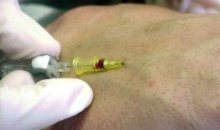
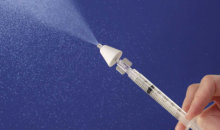
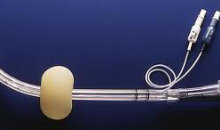
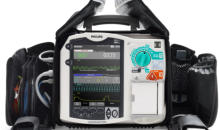
Copyright 2018

Diabetic Emergencies
Low blood sugar is a true emergency. When normal blood sugar falls below 60 brain damage can occur. Silver Lake Rescue has several drugs at our disposal to bring that blood sugar back up and reverse the damage that is being done. We can administer D50 through an IV, or Glucagon through an IM shot in the arm. For patients with high blood sugar we can infuse IV solution to help start replacing fluids lost from frequent urination caused by high blood sugar.Allergic Reactions
Anaphylaxis is a serious life threatening allergic reaction most commonly associated with bee stings and food allergies such as peanuts. Anaphylaxis requires immediate treatment before the airway swells shut. The most effective treatment is the administration of epinephrine. Silver Lake Rescue can administer both adult and child doses for rapid reversal of this life threatening condition.Asthma Attacks
One of the most common emergency calls we receive is for difficulty breathing caused by asthma. Silver Lake Rescue in these cases will administer what is called a Duoneb which is a mixture of both albuterol and atrovent through a nebulizer mask. In extreme cases we can also nebulize epinephrine along with using C-PAP to help push the medication deep into the lungs.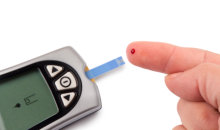

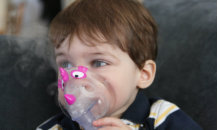

Chest Pain
Chest pain should NEVER be
ignored. For patients experiencing
chest pain from a suspected cardiac
issue, Silver Lake Rescue will
perform a 12 Lead ECG and
establish an IV so we can administer
nitroglycerin to help open partially
blocked arteries in the heart causing
the pain. Silver Lake Rescue can
also administer aspirin to help make
the platelets “slippery” to help
prevent further occlusion of the
artery and injury to the heart muscle.
It most cases the pain will be
reduced and sometimes even
eliminated altogether. The ECG is
then transmitted to the hospital
before we arrive substantially
reducing the time it takes to get the
patient to the operating table.
Cardiac Arrest
When a patient goes into cardiac arrest, time is the most important factor. Being located in the village dramatically reduces the time it takes for our AED to be applied and good chest compressions started by our Lucas II device if no shock is advised. Studies show the best chances of survival (74%) is if an AED is applied within 3 minutes of onset. With each additional minute the chances of survival drops approximately 13%. So after five minutes survival rates are only 48% without good quality CPR. Please read the highlighted portion of the published report for more information here.Traumatic Injuries
Silver Lake Rescue is unique in the fact that it responds to nearly a hundred traumatic type injuries a year. From broken bones from falls, to severe injuries caused by motor vehicle accidents, we have the tools and experience to work in these high stress environments. Silver Lake Rescue personnel have been trained in the proper use of tourniquets for arterial bleeds and occlusive dressing for open chest wounds. We have at our disposal the latest pro- splints and SAM splints to immobilize broken bones and Flight For Life to get the patient to the needed Level 1 trauma center if needed.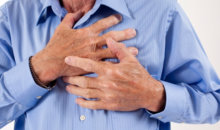
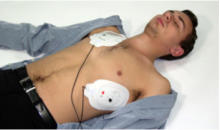
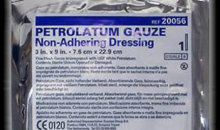

Pain Management
Silver Lake Rescue Squad is proud to be the FIRST rescue squad, in the state of Wisconsin, to deploy Nitrous Oxide in the field for pain management. Nitronox has several benefits over opiate type pain medications, such as morphine and fentanyl, which with the heroin epidemic, have become less effective in the field, especially for patients who are recovering from drug addictions. Nitrous works fast causing feelings of euphoria and in many cases allowing the patient to fall asleep. Nitrous can also be used to help reduce panic and anxiety.Lucas2 Device
As mentioned above, in order to increase survival rates during a cardiac arrest, fast access to an AED and good quality chest compressions are essential. With our Lucas2 automated chest compression devices, the patient receives the best quality CPR available with no interruptions. The Lucas2 provides compressions that are computer controlled at 100 compressions per minute at the proper depth. Unlike human hands that tire after several minutes, the Lucas2 never tires and ensures the best possible outcome.Vacuum Splints
Silver Lake Rescue Sqaud recently purchased two sets of vacuum splints that allow us to immobilize broken bones and dislocated joints. Vacuum splints are very soft and “mold” around the injury. Once the limb or joint is moved into a position of comfort, the splint is carefully placed around he limb and the air is removed. This hardens the splint allowing no movement, while applying no pressure to the injured limb. We even have an entire body splint for moving patients with hard to immobilize fractures, such as a broken or crushed hip.

